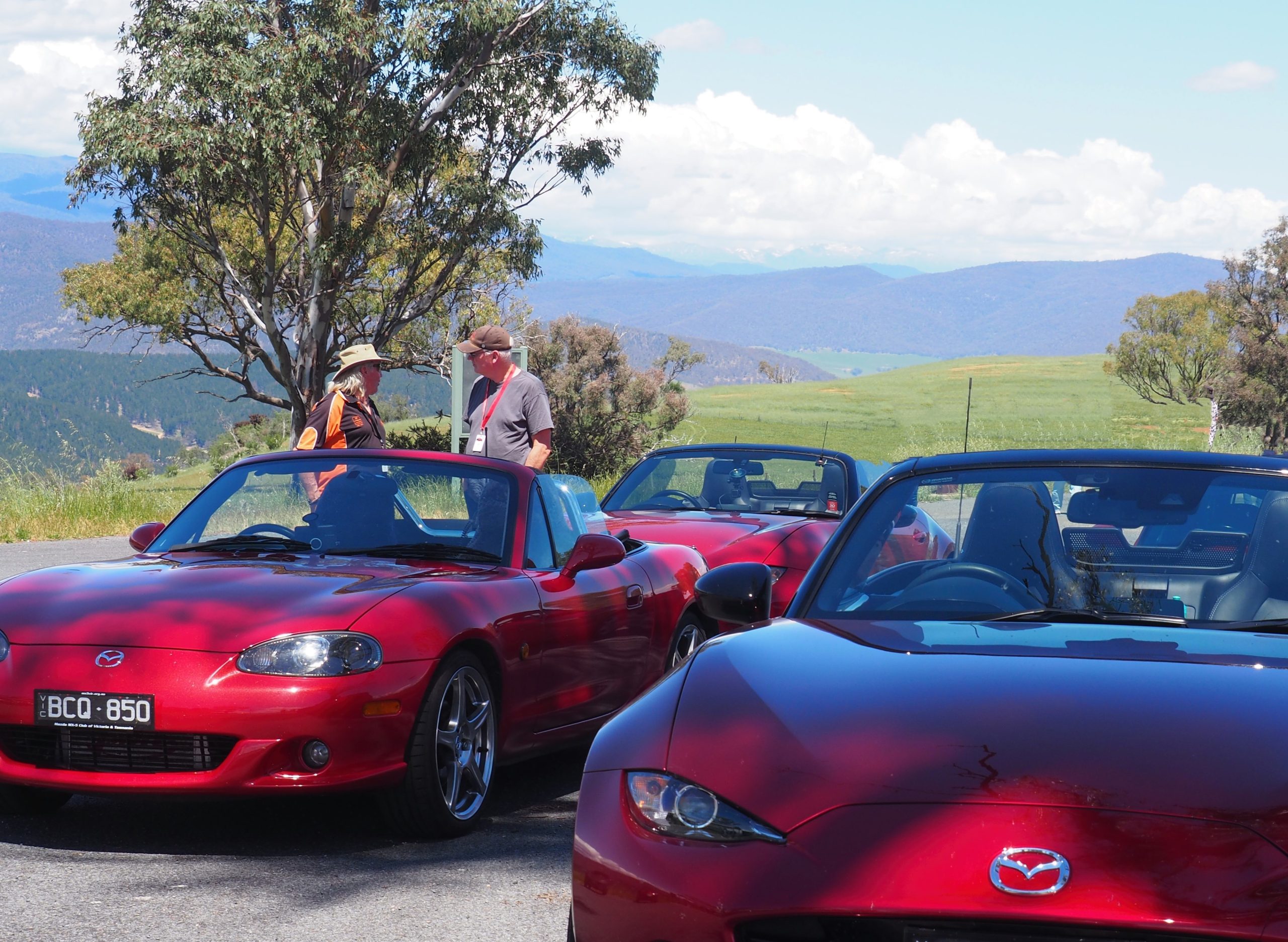Safety equipment is probably the best thing to do if you intend competing in events regularly.
Whilst accidents in general are rare, and rollovers even rarer, when pushing the limits it’s better to be safe than sorry.
Once you have committed to the sprints, a race seat (with shoulder strap slots) and an approved 5- or 6-point harness is recommended, not only for added safety, but the tightness improves the “feel” of the car through the seat, and allows a more relaxed grip on the steering wheel, both of which will improve your driving abilities. Additionally, a FHR or HANS (Head and Neck Support) device is recommended. This requires an appropriate helmet with built in attachment studs. The FHR/HANS device restrains the driver’s head from excessive movement in an accident, reducing the risk of neck injury. Especially for the NA and NB series cars, a roll bar should be high on the priority list.
Before spending money on performance gear, it’s worth remembering that the largest performance gains can generally be made through driving technique, and using the existing full capabilities of the car. If you’re not revving it to the redline on every gearchange, there’s no point modifying the car for power gains (and those power mods are usually related to freeing up airflow at the top end anyway). Likewise, if you aren’t experiencing brake fade, don’t bother spend money upgrading the braking system.
Save those funds for driver training and more seat time. Tighten the nut behind the wheel first. Once you can recognise the shortcomings of the standard car, then you are in a better position to decide how to improve it.
Power: Everyone wants more power, but without spending a lot, it is hard to get significant gains from the MX-5. The standard engine is a well-developed, high-revving and reliable powerplant. Depending on the model, a performance exhaust system and cold air intake are economical, common modifications. As the old racer’s adage goes: Speed costs. How fast do you want to go?
Handling: Popular handling upgrades are performance (adjustable) shock absorbers, and shorter and stiffer springs. These can improve handling sharpness and cornering abilities, but if your car is used on the road it’s wise not to go too hard or low, or the ride, comfort and ground clearance can be unbearable. If the suspension is so stiff that you are bouncing over bumps on the road, your handling and grip will be decreased as you lose contact with the road surface. What works for the track isn’t always best for the road, so if your MX-5 is a daily driver, a compromise will have to be reached.
Wheel alignment is also highly recommended and very cheap, and the MX-5’s suspension is fully adjustable. If you go to events regularly it’s wise to run more camber than you would on the road to improve handling and reduce wear on the tyre shoulders.
Wheels and Tyres: Many drivers fit wider, lightweight, alloy rims to their cars with either road “hybrid” or racing (R spec) tyres. The road “hybrid” tyres provide impressive grip and reasonable wear at an affordable price. Details of these tyres are listed in the Motorsport Championship rules in the tyres section. Racing R spec tyres provide greatly improved braking and cornering grip. While being road legal, they are generally more expensive and wear much more quickly than standard road tyres.
Brakes are also critical on the track, where you will use them harder than you ever could on the road. Fresh brake fluid is necessary as it absorbs water with age, lowering its boiling point. Choose a good DOT4 grade fluid, bleed it regularly, and flush it about once a year. The OEM brake pads are quite good on a relatively standard car but will wear quickly. There are many higher performance pad options available to suit the performance of the car, but for a registered road car, select intermediate road/track pads which will work when cold.
For each area of modification or upgrade, there are numerous options and brands to choose from. To find out what works (and equally what doesn’t), ask a fellow competitor at an event for suggestions.
If you have any more questions feel free to contact your Chapter Captain – Motorsport.
This Page Last Updated on 07-07-2025 by Murray Finlay








